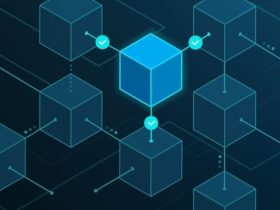June 13, 2025 underscores a dynamic moment in the cybersecurity landscape, driven by new executive directives, major M&A activity, strategic public-sector investments, and evolving threat paradigms. Today’s Cybersecurity Roundup op-ed briefing distills five of the week’s most impactful developments:
-
U.S. President issues sweeping Cybersecurity Executive Order
-
LevelBlue to acquire Aon’s Cybersecurity IP & Litigation Consulting
-
UK Spending Review backs AI-driven cyber defenses
-
NTT DATA and Booz Allen Hamilton partner in Singapore
-
Top global cybersecurity trends for 2025
In each section, we summarize the news, offer analysis on strategic implications, and explore how these moves reshape risk management, innovation funding, and public-private cooperation.
1. President Trump Signs New Cybersecurity Executive Order
In a landmark move on June 12, 2025, President Trump issued a comprehensive Cybersecurity Executive Order (EO) aimed at hardening federal networks, accelerating private-sector adoption of zero-trust architectures, and mandating standardized incident-response protocols across all Cabinet agencies. Key directives include:
-
Zero-Trust Mandate: All federal agencies must adopt a zero-trust security model within 12 months, replacing perimeter-based defenses with continuous verification of users and devices.
-
Supply-Chain Security: Introduction of stricter vetting requirements for federal IT contractors, emphasizing software bill-of-materials (SBOM) disclosure and third-party code audits.
-
Incident Reporting & Sharing: A new “Cyber Rapid Response Network” will centralize threat intelligence and require agencies to report any breach affecting critical infrastructure within 24 hours.
-
R&D Funding Boost: An additional $2 billion allocated to the Cybersecurity and Infrastructure Security Agency (CISA) to expand public-private innovation labs focused on AI-driven threat detection.
Analysis & Implications
This EO represents the most aggressive federal cybersecurity policy in a decade. By institutionalizing zero-trust principles and SBOM transparency, the administration signals a shift away from reactive defense toward proactive resilience. The accelerated funding for AI-based research labs will catalyze startups and established vendors alike to innovate on anomaly detection, automated remediation, and adversarial-resilient architectures. However, the 12-month compliance timeline poses significant operational challenges for underfunded agencies; congressional and industry stakeholders must collaborate to ensure realistic milestones and resource allocation.
Source: InfoSecurity Magazine
2. LevelBlue Agrees to Acquire Aon’s Cybersecurity IP & Litigation Consulting Groups
On June 11, 2025, LevelBlue—an independent financial advisory firm specializing in cyber-risk financing—announced its agreement to acquire Aon’s Cybersecurity Intellectual Property (IP) and Litigation Consulting units. Under the deal:
-
Scope of Acquisition: LevelBlue will absorb Aon’s proprietary cyber-risk modeling engines, patent portfolios in ransomware insurance, and a 150-person consulting team serving Fortune 500 litigation clients.
-
Strategic Rationale: The acquisition positions LevelBlue to offer end-to-end cyber-risk services—from actuarial pricing and capital strategy to breach response counsel—under one roof.
-
Transaction Details: The deal, valued at $420 million, is expected to close by Q3 2025, pending regulatory approval.
Analysis & Implications
This consolidation reflects a broader trend of financial and consulting firms vertically integrating cybersecurity expertise into risk-transfer offerings. By combining Aon’s litigation know-how with its analytics platform, LevelBlue aims to underwrite complex cyber policies more accurately and defend clients in post-breach legal proceedings. For insurers and corporate CISOs, this could translate into more comprehensive, competitively priced coverage with built-in remediation playbooks. Market watchers should anticipate further M&A as firms vie to close gaps between risk assessment, risk transfer, and incident management.
Source: Business Wire
3. UK Spending Review Backs AI Cybersecurity and Intelligence Modernization
The United Kingdom’s 2025 Spending Review, unveiled on June 10, allocates £1.8 billion over the next three years to bolster AI-enabled cybersecurity initiatives and intelligence modernization across government and critical-infrastructure sectors. Highlights include:
-
AI “Defender’s Fund”: £650 million dedicated to R&D partnerships between GCHQ’s National Cyber Security Centre (NCSC) and U.K. universities, focusing on behavioral-analytics engines to detect insider threats.
-
Industrial Control Systems (ICS) Upgrade: £500 million for retrofitting energy and transportation SCADA networks with next-gen threat-response sensors and automated patch orchestration.
-
Workforce Development: £200 million toward training 5,000 new cyber specialists annually in zero-trust operations, threat hunting, and quantum-resistant cryptography.
-
Global Collaboration: £350 million to expand U.K. leadership in Five Eyes AI-cyber fusion initiatives, sharing classified cyber-threat telemetry in real time.
Analysis & Implications
By explicitly funding AI-driven cybersecurity research, London acknowledges that machine-learning models are becoming indispensable for parsing the massive telemetry from nation-state and organized-crime adversaries. The ICS investments will set a global benchmark for operational-technology hardening, potentially attracting U.K. defense contractors eager to pilot cutting-edge intrusion-detection tools. Moreover, the emphasis on workforce scaling addresses the chronic talent shortage, yet risks a skills-mismatch if curricula fail to keep pace with evolving attack techniques. Stakeholders should monitor the efficacy of public-private labs in translating theory into deployable solutions.
Source: Industrial Cyber
4. NTT DATA and Booz Allen Hamilton to Strengthen Cybersecurity in Singapore
NTT DATA Services and Booz Allen Hamilton have jointly announced a strategic partnership to enhance Singapore’s cybersecurity posture for both government agencies and enterprise clients. As of June 11, 2025:
-
Integrated Security Operations Centers (SOCs): The firms will co-develop a tri-lingual (English, Mandarin, Bahasa) Security Operations Center in Singapore, leveraging Booz Allen’s threat-intelligence frameworks and NTT DATA’s cloud-native SIEM platforms.
-
Managed Security Services: Offerings will include 24×7 threat monitoring, red-team assessments, and AI-powered endpoint protection tailored to ASEAN regulatory standards.
-
Capacity Building: Joint training programs aim to certify 1,000 local cybersecurity professionals in advanced incident-response and threat-hunting techniques over the next two years.
Analysis & Implications
This alliance illustrates the accelerating trend of global consultancies and cloud providers teaming up to capture the Asia-Pacific market, where digital-transformation initiatives amplify attack surfaces. By combining Booz Allen’s government-grade methodologies with NTT DATA’s regional delivery capabilities, the partnership can address both strategic cyber-resilience planning and tactical threat mitigation. ASEAN organizations eyeing digital expansion will likely view this offering as a turnkey solution for regulatory compliance (e.g., Singapore’s PDPA) and robust defense-in-depth architectures.
Source: NTT DATA Global Newsroom
5. Top Cybersecurity Trends to Watch in 2025
A recent report from Simplilearn synthesizes input from 200+ industry experts to identify ten cybersecurity trends poised to define 2025—and five stand out for their transformative potential:
-
AI-Driven Automated Defense: Widespread adoption of self-healing networks that autonomously quarantine compromises and deploy machine-learned patches in real time.
-
Quantum-Resistant Cryptography: Pilots of lattice-based encryption for critical-infrastructure communications in anticipation of quantum computing breakthroughs.
-
Identity-as-Perimeter (IaaP): Shift from network-centric defenses to identity-centric models, with dynamic trust scoring and continuous authentication for users and devices.
-
Extortionware & Deepfake Threats: Rise of AI-synthesized voice/video attacks targeting C-suite executives to manipulate transactions or trick incident-response teams.
-
Supply-Chain Attacks 2.0: Proliferation of code–injection in open-source components and “dependency confusion” exploits, driving demand for SBOM verification services.
Analysis & Implications
These trends coalesce around one theme: automation and intelligence will define the offense-defense balance. Organizations that invest in adaptive AI defense systems and quantum-hardened cryptography will outpace adversaries relying on static controls. Conversely, the sophistication of social-engineering vectors demands elevated user-training and advanced anomaly detection. Cybersecurity leaders must architect holistic programs that integrate AI, identity governance, and supply-chain assurance to stay ahead in a landscape where each attack command can be orchestrated by machine — at machine speed.
Source: Simplilearn
Conclusion
June 13, 2025’s cybersecurity headlines reveal an ecosystem in rapid transformation:
-
The U.S. federal government’s executive mandate compels a paradigm shift toward zero-trust and supply-chain transparency.
-
Consolidation in cyber-risk services, exemplified by LevelBlue’s M&A, promises end-to-end advisory and litigation support.
-
The U.K.’s Spending Review accelerates AI-backed cyber defenses and intelligence modernization.
-
In Asia, NTT DATA and Booz Allen set a new standard for regional SOC and managed-services collaboration.
-
Industry thought leaders highlight AI automation, quantum-resilience, and emerging extortionware as the next frontiers of both offense and defense.
Taken together, these developments underscore three core imperatives for cybersecurity stakeholders:
-
Embrace Automation & AI: To process escalating volumes of threat data and respond at machine speed.
-
Harden Ecosystems: Through zero-trust frameworks, SBOM transparency, and quantum-resistant encryption.
-
Foster Public-Private Synergy: Combining government mandates with industry innovation and capacity building.
As risk profiles evolve, organizations that integrate these pillars into cohesive, strategy-driven programs will not only mitigate today’s threats but anticipate tomorrow’s.
















Got a Questions?
Find us on Socials or Contact us and we’ll get back to you as soon as possible.